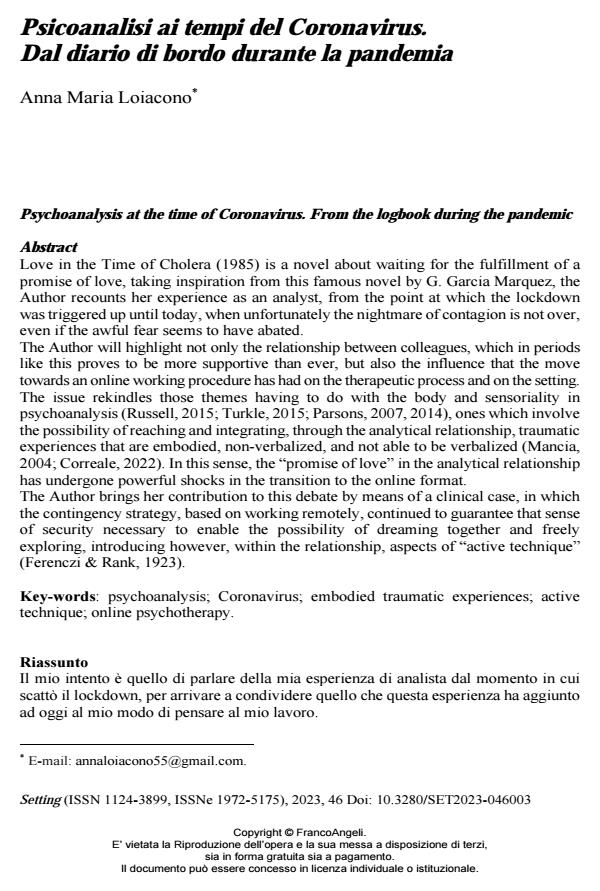Psychoanalysis at the time of Coronavirus. From the logbook during the pandemic
Journal title SETTING
Author/s Anna Maria Loiacono
Publishing Year 2024 Issue 2023/46
Language Italian Pages 17 P. 55-71 File size 258 KB
DOI 10.3280/SET2023-046003
DOI is like a bar code for intellectual property: to have more infomation
click here
Below, you can see the article first page
If you want to buy this article in PDF format, you can do it, following the instructions to buy download credits

FrancoAngeli is member of Publishers International Linking Association, Inc (PILA), a not-for-profit association which run the CrossRef service enabling links to and from online scholarly content.
Love in the Time of Cholera (1985) is a novel about waiting for the fulfillment of a promise of love, taking inspiration from this famous novel by G. Garcia Marquez, the Author recounts her experience as an analyst, from the point at which the lockdown was triggered up until today, when unfortunately the nightmare of contagion is not over, even if the awful fear seems to have abated. The Author will highlight not only the relationship between colleagues, which in periods like this proves to be more supportive than ever, but also the influence that the move towards an online working procedure has had on the therapeutic process and on the setting. The issue rekindles those themes having to do with the body and sensoriality in psychoanalysis (Russell, 2015; Turkle, 2015; Parsons, 2007, 2014), ones which involve the possibility of reaching and integrating, through the analytical relationship, traumatic experiences that are embodied, non-verbalized, and not able to be verbalized (Mancia, 2004; Correale, 2022). In this sense, the “promise of love” in the analytical relationship has undergone powerful shocks in the transition to the online format. The Author brings her contribution to this debate by means of a clinical case, in which the contingency strategy, based on working remotely, continued to guarantee that sense of security necessary to enable the possibility of dreaming together and freely exploring, introducing however, within the relationship, aspects of “active technique” (Ferenczi & Rank, 1923).
Keywords: psychoanalysis; Coronavirus; embodied traumatic experiences; active technique; online psychotherapy.
Anna Maria Loiacono, Psicoanalisi ai tempi del Coronavirus. Dal diario di bordo durante la pandemia in "SETTING" 46/2023, pp 55-71, DOI: 10.3280/SET2023-046003